The Art House | New Hampshire Artist Lauren Decatur
New Hampshire artist, painter and needle felter Lauren Decatur finds inspiration in the nature at her doorstep.
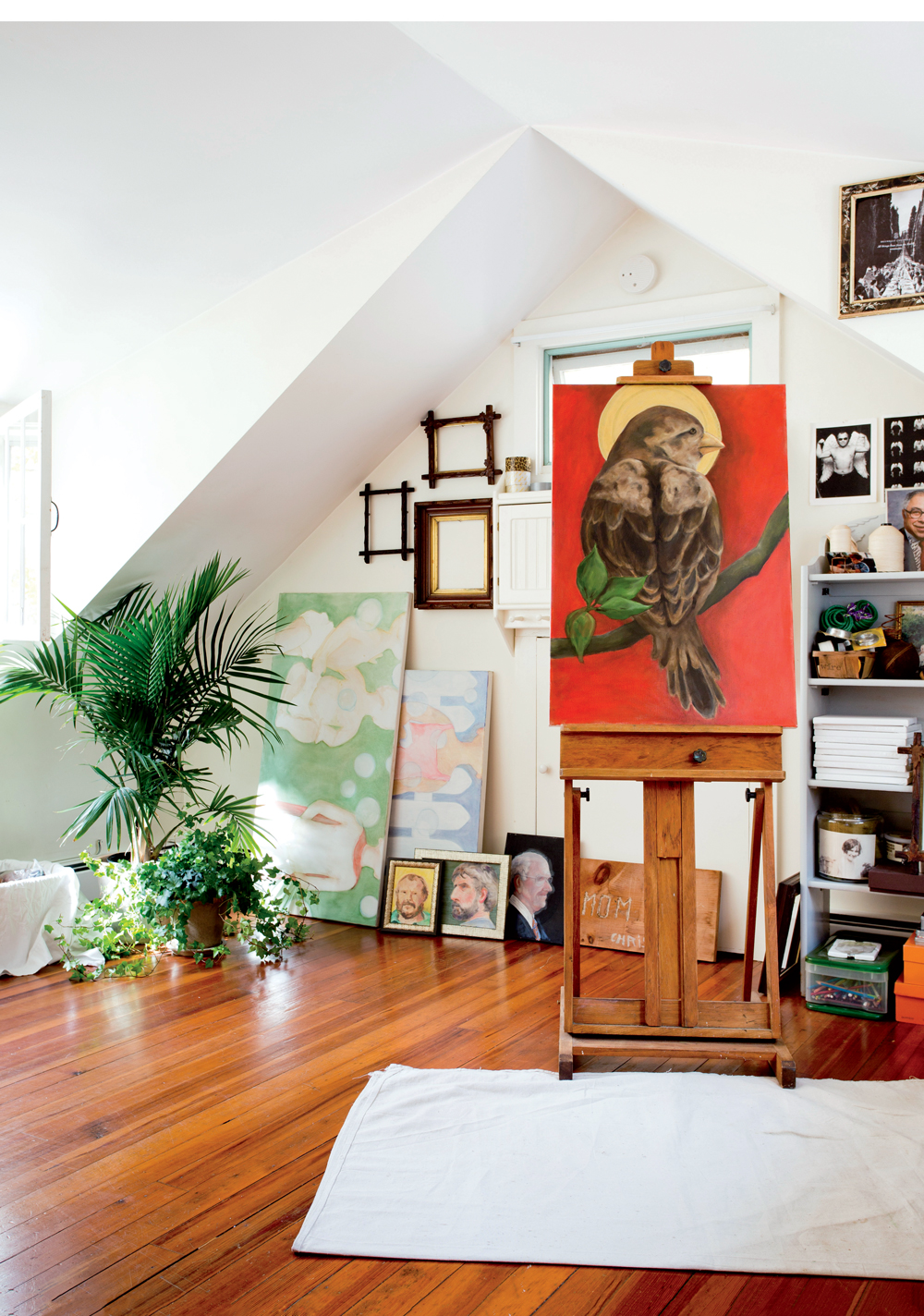
A series of loosely rendered figures of children in soft hues lean against the wall in Lauren Decatur’s second-floor studio. Her frame collection—empty frames are scattered throughout the house—inspires her painting. When the spirit strikes, she plucks one down, stretches a canvas to fit, and gets to work.
Photo Credit : Rikki Snyder
Photo Credit : Rikki Snyder
Tucked down a gravel road in a slow-paced southern New Hampshire town, Lauren Decatur’s clapboard New England cottage stands overlooking a farm, surrounded by horses, sheep, and cattle, with windows framing a perfect view of Mount Monadnock. She lives here with a puppy named Audrey—no relation to Hepburn, “but just as petite”—and from these rooms, she paints and sculpts magical, true-to-life animals out of raw wool, using notched needles, in a process called needle felting. This setting was serendipitous—she didn’t seek out a farm view—but she now finds comfort and inspiration in her good fortune. “Since I work primarily in wool,” she says, “it’s symbiotic that when I look out my windows, I see sheep.”
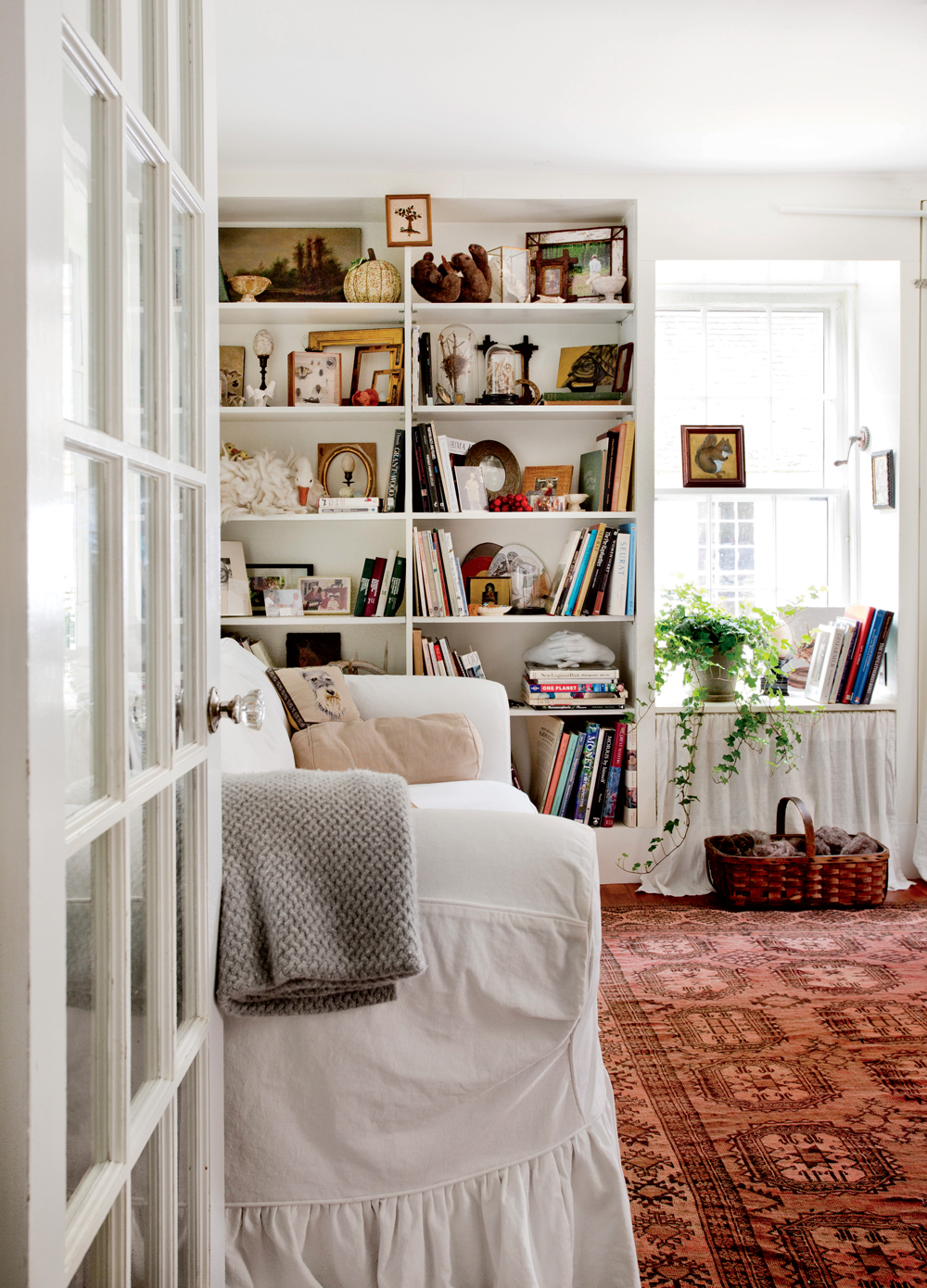
Photo Credit : Rikki Snyder
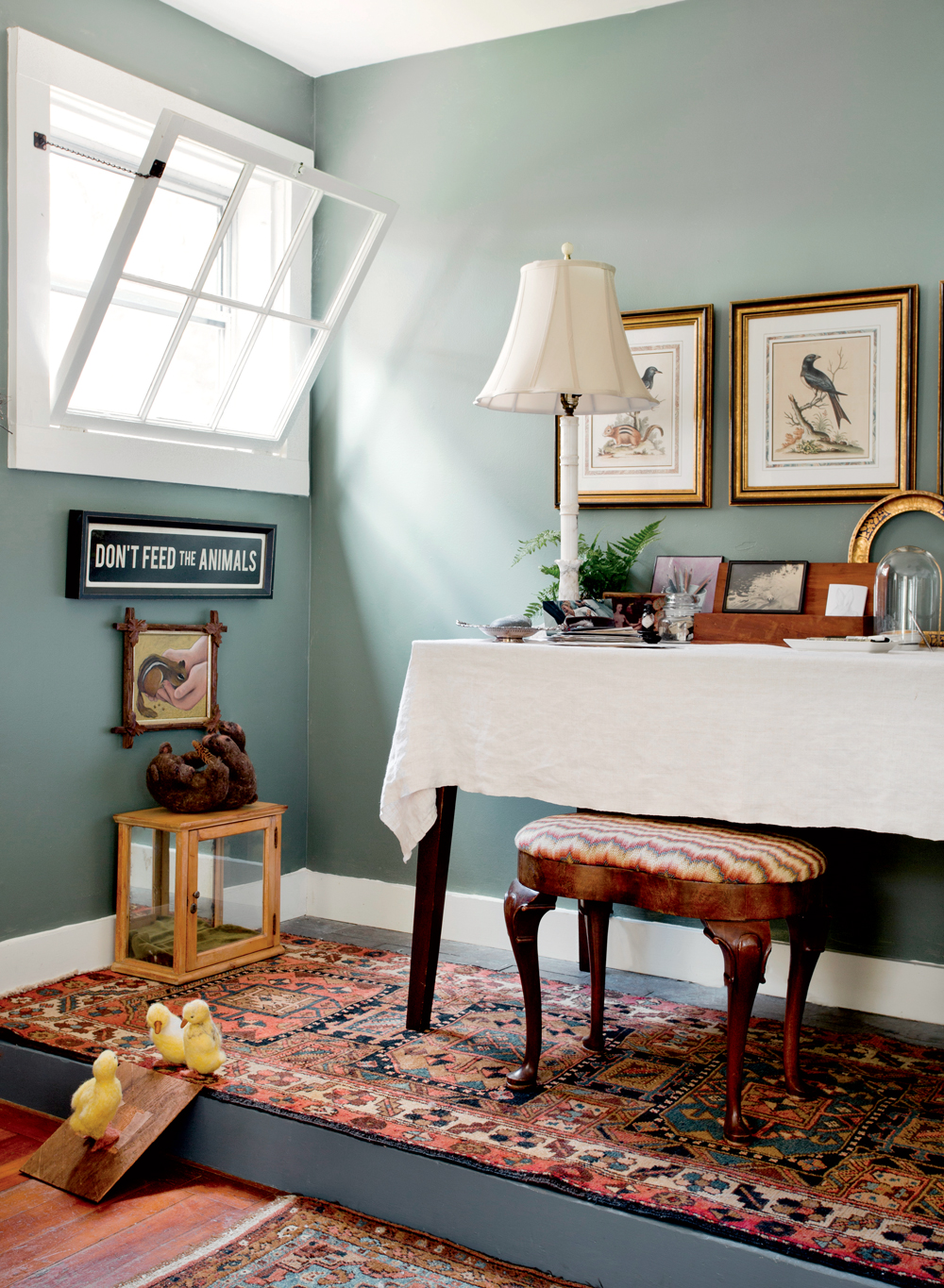
Photo Credit : Rikki Snyder
Decatur moved here just last fall, though she’s been living in the region for more than 10 years, having relocated from Massachusetts’ South Shore, where she raised her children. She likes that the area has a history of attracting writers, painters, and nonconformists, with a long-established artist’s retreat nearby serving as its creative heart. She’s renting this house, but she’s made it her own. From the first moment you enter, it’s clear that an artist’s hand is at work here, not just in the sculptures and paintings placed throughout, but in the design of the rooms themselves. Decatur insists that her approach to decorating is really no approach at all. Rather, she says, “I just surround myself with the objects and colors I love. I don’t really think of it as ‘decorating.’” And yet her home is proof that the notion of an “artist’s eye”—that enviably innate ability to create spontaneous beauty—is real.

Photo Credit : Rikki Snyder
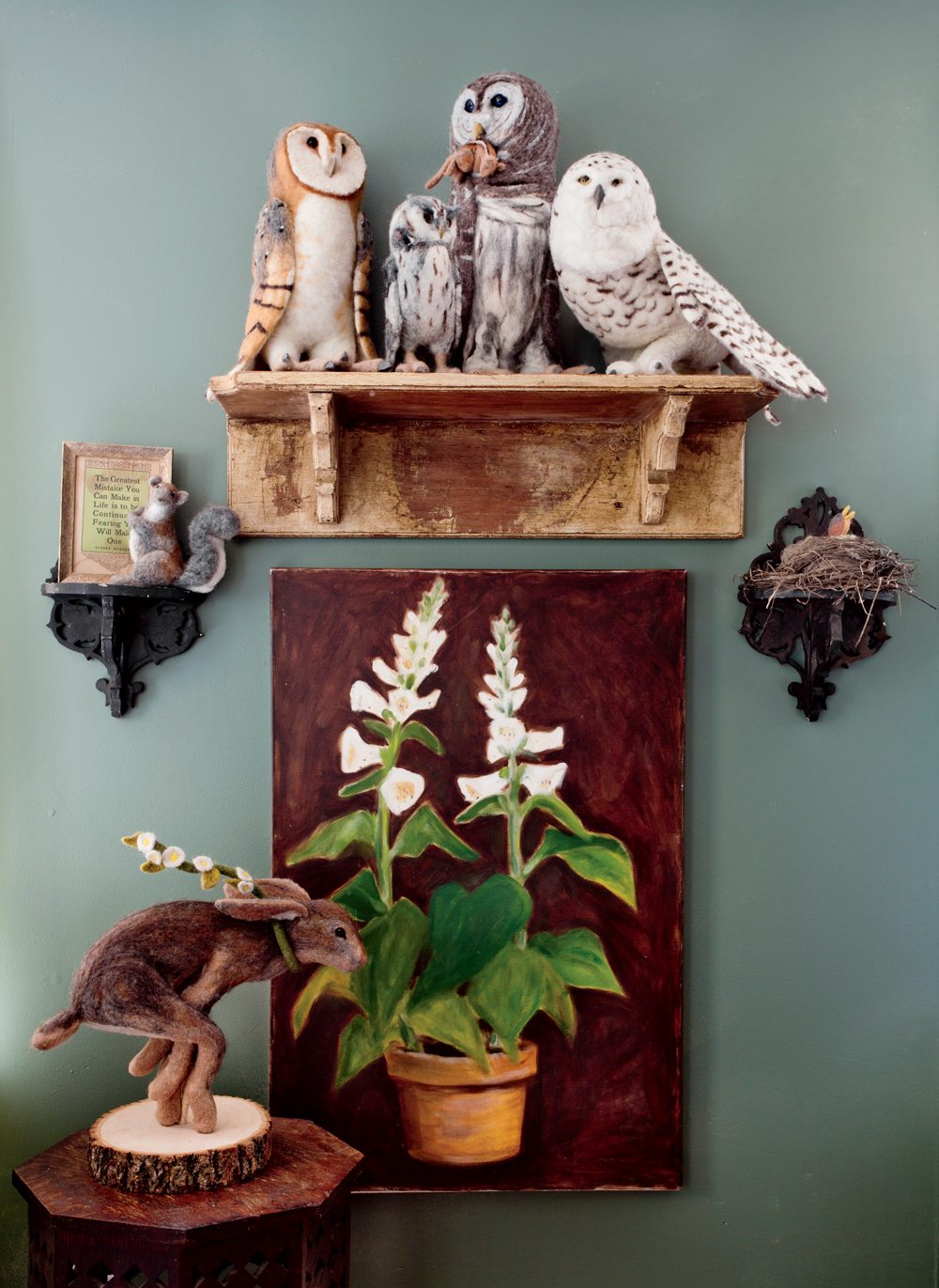
Photo Credit : Rikki Snyder
Decatur favors a relaxed style influenced by an Old English sensibility, with muted colors (she’s used the same paint colors for 20 years) and well-loved pieces. “I like a comfortable, broken-in look,” she says. Most important, she regards her home as a living studio, so it’s essential that her living spaces also function as workspaces. “I spend 10 to 12 hours a day making art; I use the entire house as studio space in one way or another,” she says. Nevertheless, she’s always ready for company. “I just toss my piles of wool into baskets, add a vase of flowers to a table, and nobody’s the wiser,” she says.
The spruce-green living room is bright and cozy, decorated with Oriental rugs, nature-walk finds, antiques, and beautifully displayed tools of her trade. A shabby-chic slipcover graces a roll-arm sofa with down cushions purchased 30 years ago at Bloomingdale’s. “My mother told me to spend money on upholstered furniture and lamps because those are pieces that last,” Decatur explains. “Well, here we are, many slipcovers later.” She’s collected white alabaster lamps from Italy for years because, like white furniture, they work everywhere.
Playful vignettes starring her hand-made creatures are staged at every turn, transforming rooms into a sort of enchanted felted world. (One day, she hopes to turn these scenes into a series of children’s picture books.) Down on the floor, a parade of fuzzy ducklings ascend a tiny plank. Up on the wall, a parliament of felted owls perch on a reclaimed wooden shelf. “I’m most known for my owls,” she says. “They’re all true to size, with realistic markings.”
The felting studio is through French doors off the living room, in what would normally be considered the den. Decatur, however, hasn’t owned a television for more than a decade. Rag rugs are scattered across the wood floor. A worktable and cubbies hold skeins of wool in earth and jewel tones, along with felted critters both complete and in progress.
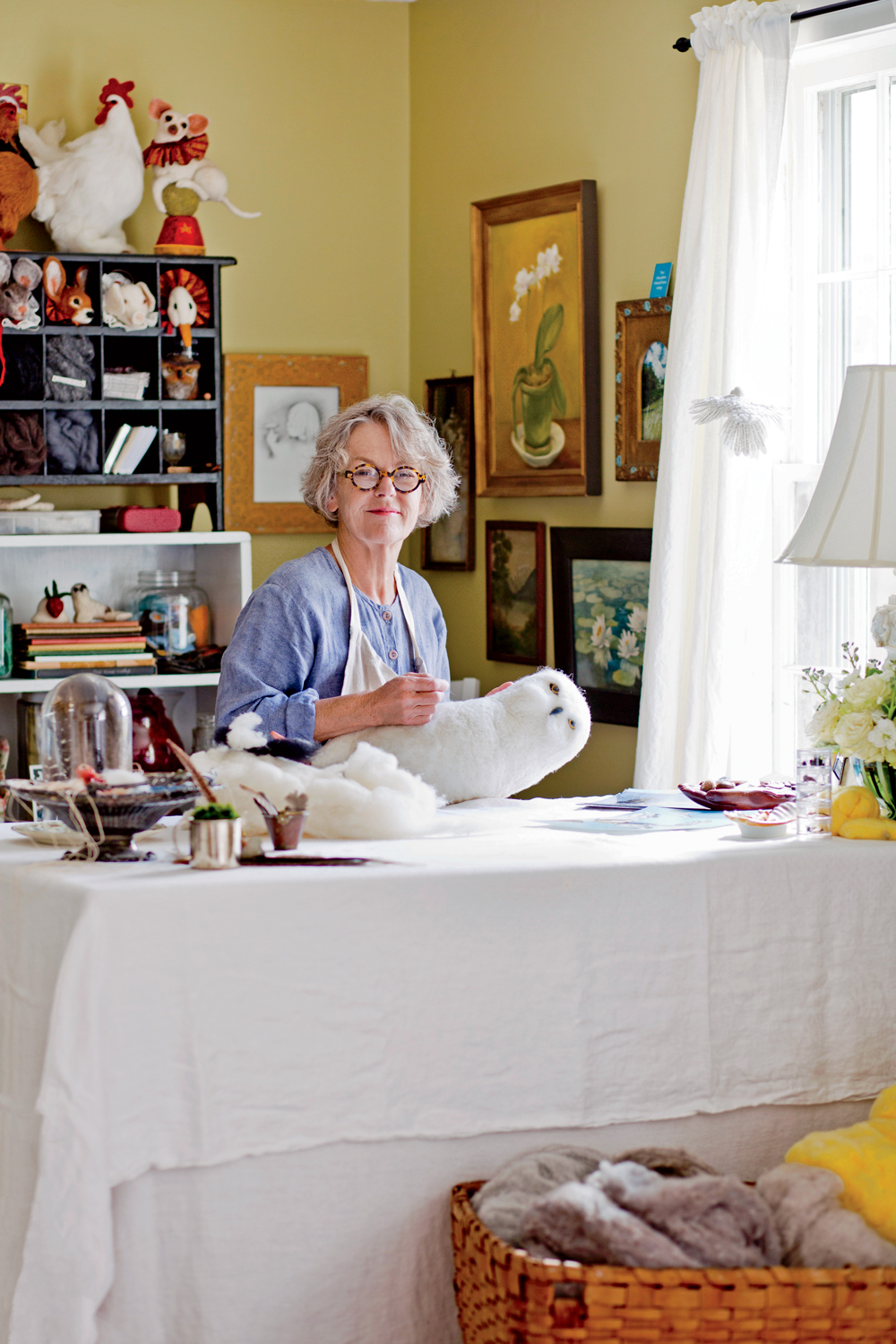
Photo Credit : Rikki Snyder
In the country kitchen, a long white linen-draped table, situated under a pair of windows with grand mountain views, does double duty for felting and eating. A marble slab that she’s been hauling around for 30 years—it once topped an old Victorian bureau—now sits on the counter for rolling out pie crusts.
Decatur’s bedroom, on the second floor across from her painting studio, is an airy haven with odd angles that magically reflect the sunlight. “When I peek in during the day,” she says, “it’s glowing.” The old Victorian bed, acquired on her travels and painted off-white, is dressed in pink printed sheets and vintage 1930s and ’40s floral pillowcases.
It’s in this room that Decatur displays sentimental tokens, such as old black-and-white photos of her parents; a framed sweater—a gift from a family friend—that she wore home from the hospital when she was born; and a childhood drawing of her mother on a chaise. “It’s the first portrait I ever made,” she says. “Of course there’s a butterfly; every picture that year had a butterfly.” Even then, nature was front and center.


